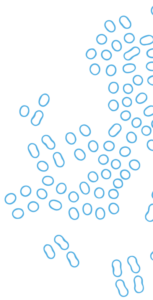
Sunshine Private Hospital’s Mental Healthcare Team Wellbeing Information
Our Mental Healthcare Team have created a Mental Health and Wellness page offering wellness tips if you are looking for ways you can look after your mental health and emotional wellbeing.
Mental Health & Wellness Blog
Emotional Wellbeing
February is Ovarian Cancer Awareness Month
Being diagnosed with cancer can result in a broad range of emotions.
You may want to put on a ‘brave face’, but it’s important to try and acknowledge and give space for your strong emotions.
You may find that your diagnosis can have affects on your sense of self and identity.
Mindfulness can be a way of connecting with your body and help you with these strong emotions.
Here is a simple mindfulness exercise you may want to try
It can be hard to return to work after the holidays,
so make some time for self-care during this transition.
Our Mental Health Team has some wellness tips for you-
Caring for your Mental Health over the holiday season-some tips from our Mental Health team
Our Mental Health Care Team
Employee Spotlight-Tharushi, Social Worker
Maintaining your wellbeing and looking after your mental health has never been more important. Wellbeing helps us stay resilient, build social support and self-efficacy, and cope with adversity. It’s good to know there are things we can do to enhance our wellbeing.
For helpful tips to look after your mental health & wellbeing, here are some other useful links:
Information about common mental health issues & treatments
Anxiety

Everyone feels worried or stressed from time to time. Usually, those feelings fade when a stressful situation has passed. However, some people experience overwhelming feelings of worry, for no particular reason that can make it difficult to cope with daily life. This is called anxiety. An anxiety condition isn’t developed or caused by a single factor but a combination of things. These can include personality factors, difficult life experiences and physical health. If you suffer from anxiety, your physical, behavioural and psychological characteristics may be very different to another person with anxiety. There are many effective treatment strategies that can help you manage anxiety. The type of treatment will depend on the type of anxiety you are experiencing.
Generalised anxiety disorder
This is the most common anxiety disorder. It is a mental health condition when you have uncontrollable worry and anxiety that isn’t necessarily connected to recent stressful events, but it can be brought on by certain situations.
Social anxiety disorder
Social anxiety disorder, or social phobia, is when you are affected by a significant amount of fear of avoidance within social situations, causing considerable distress and impaired ability to function in parts of your daily life.
Panic disorder
If you experience unexpected and disabling panic attacks, and are also preoccupied with the fear of a recurring attack, you may have a panic disorder. A panic attack may include a rapid heartbeat , sweating, shaking, shortness of breath, numbness, or an overwhelming sense of fear.
Specific phobias
This type of anxiety is defined as an extreme fear of a particular object, activity or situation which is out of proportion with the actual level of threat posed. People struggling with a phobia feel anxious when faced with a spider or snake, aircraft travel, germs, injections, or tall buildings, to name a few.

Depression
Feeling sad or down from time to time is a normal part of life. However, some people experience intense sadness and low mood that is difficult to shake. This is called depression. People with depression may experience poor sleep, a lack of motivation or interest, and a feeling of emptiness or numbness. These feelings interfere with their daily lives, making it difficult to do things they would otherwise enjoy. Different people will experience depression in different ways, and as such treatment for depression will vary from person to person.
Major (clinical) depression
Major depression is perhaps the most common manifestation of the condition, which involves a persistent feeling of sadness or lack of interest in usual activities. Both exposure to stressful life events and genetic factors are associated with the onset of a major depressive disorder. Symptoms are debilitating, affecting almost every aspect of a person’s social and professional life.
Perinatal depression
Perinatal or postpartum depression, is a common condition affecting mothers during pregnancy or after the birth of a baby. Sufferers can feel overwhelmed or unable to cope with their new role as a parent. This type of depression can have a severe impact on the mother-child relationship, rouse intense feelings of sadness and guilt.

Bipolar Disorder
Bipolar disorder causes extreme mood swings that include emotional highs (mania or hypomania) and lows (depression).The signs and symptoms of bipolar disorder are experienced differently between patients, depending on personal circumstances and the type of condition. It is important to understand that some people with bipolar disorder can experience a less severe form of mania, called hypomania. The manic features of hypomania aren’t severe enough to impair a person’s daily life, but they can lead you to be more sociable or productive than usual. Others will experience mixed mood states where both depressive and manic symptoms exist together. Developing targeted treatments for the different types of bipolar is essential, to address episode management and patient support.
Type 1
This type of bipolar disorder involves periods of severe mood episodes ranging from both mania to depression.
Type 2
This type of bipolar disorder consists of a milder form of mood elevation, with less extreme episodes (called hypomania) that alternate with episodes of significant depression.
Trauma and PTSD

Trauma is an emotional response to a terrible event. When a person experiences a traumatic event that has threatened their life or safety, or the safety of those around them, they can be left with intense feelings or fear and helplessness. This can trigger responses such as avoidance, intrusive thoughts and high reactivity. This is called post-traumatic stress disorder or PTSD.
A person may develop PTSD after a traumatic event such as a car crash, physical or sexual assault, war or torture, or natural disasters such as bushfires or floods. Many people show symptoms of PTSD in the first few weeks after a traumatic event but recover on their own with the support of family and friends. Others may require treatment and support from health professionals.
Effective treatment for PTSD involves a mix of inpatient psychiatric care and outpatient psychological services.
Neurostimulation – rTMS

What is rTMS?
Repetitive Transcranial Magnetic Stimulation (rTMS) is a non-invasive procedure that involves the focused application of magnetic energy to superficial regions of the brain, inducing small electrical currents. During an rTMS procedure, an electrical current passes through a small coil placed close to the scalp. This current induces a magnetic field. The magnetic field can pass into the brain without resistance. If the magnetic field is of sufficient strength, it will stimulate electrical activity in nerves below the coil, that is, in superficial regions of the brain.
rTMS in Depression
Studies have evaluated the role of rTMS in the treatment of depression since the mid-1990s. These studies have clearly shown that rTMS is more effective than a placebo type of stimulation, especially in patients who have not responded well to antidepressant medication treatment.
How is rTMS administered
rTMS is administered as a course of 20 treatments which are generally administered on a daily basis. Sessions usually take between 20 and 45 minutes per day depending on the protocol being utilised. During an rTMS session a patient is awake, alert and aware of what is happening at all times and is seated in a comfortable chair. Before the treatment course begins, the treating Psychiatrist will undertake threshold testing to ensure that the correct prescription is tailored for the patient for the treatment sessions.
You may feel small twitches in the hand during this procedure. It is not painful. This procedure is done to establish how high the machine intensity needs to be sent to affect the brain in an individual patient.
During the treatment itself, a coil is usually placed on the scalp (held by hand or with a coil stand) near the front region of the brain. This may be on the left or right depending on how the treatment is being given. The coil is connected to a machine that generates the electrical current. You may feel a tapping sensation under the coil (this occurs due to a twitch produced in scalp muscles as the magnetic field crosses into the brain). The magnetic field can also stimulate small nerves around the head and face, producing a muscle twitch in the forehead, face or eye region.
Side Effects of rTMS
Common side effects include headache, scalp discomfort and facial muscle twitching. These side effects are mild and generally resolve soon after a treatment session. Most patients find side effects reduce in intensity and frequency as the course of TMS progresses.
Electroconvulsive Therapy (ECT)
What is electroconvulsive therapy
Electroconvulsive therapy (ECT) is a medical procedure used to treat serious mental health conditions. ECT is considered a safe and effective treatment for severe depression. ECT involves delivery of a small electric current to the brain while you are under anaesthetic. ECT can only be given after you provide informed consent.
Informed consent
Before ECT can be used, you must give informed consent to show that you understand the treatment. This includes the risks and benefits. If you are unable to give consent because of poor mental health, there are rules your psychiatrist must follow. A person who gives consent can withdraw it at any time during treatment.
When is ECT used
ECT can be used to treat severe depression and other psychiatric disorders such as bipolar disorder and schizophrenia. ECT may be considered for the treatment of depression if other treatments have not worked. This includes antidepressant medicines and talking therapies such as cognitive behaviour therapy (CBT). ECT is useful because it works more quickly than other treatments.
How is ECT given
ECT is given by a psychiatrist and an anaesthetist. A general anaesthetic is given before the ECT procedure. The general anaesthetic means you will not feel pain or be aware during the procedure.
For ECT, electrodes are placed on one (unilateral) or both (bilateral) sides of your scalp. These are used to deliver a small electric current, which triggers a brief seizure. The seizure will last 20 to 60 seconds. The seizure changes the chemistry in your brain to help improve your symptoms.
You usually wake up 5 to 10 minutes after the procedure. Between 8 and 12 sessions of ECT are given in a treatment course. There are usually a few days between sessions. This depends on the nature of the illness and how you respond to treatment.
What are the side effects of ECT
You may feel disorientated and confused straight after ECT. Other common side effects are headaches and nausea (feeling sick). The main side effect of ECT is short-term memory loss. This usually improves once you finish your ECT treatment. You should be fully recovered in 2 to 4 weeks.
In some people, ECT can cause long-term or permanent memory loss. This is very rare. This should be considered when making major life decisions. Your ability to drive may also be affected, mainly in the first month after ECT. Following successful ECT treatment, antidepressant or mood-stabilising medicines are usually needed for 1 to 2 years. The medicines may need to be combined with more ECT.
More Information about our Services
For Mental Health Inpatient admissions please call the unit direct: P 03 9124 2528 or 03 9124 4568
or email- [email protected] and our staff will be able to assist you.
Our Philosophy of Care
We keep you, the patient, at the top of mind with every decision we make about the type of care we provide.
Our care is:
Multidisciplinary
Trauma-informed
Recovery-focused
Patient-centred
For more information on what our service provides
Privacy Policy
For information on Sunshine Private Hospital’s privacy policy, please click below


 '
'